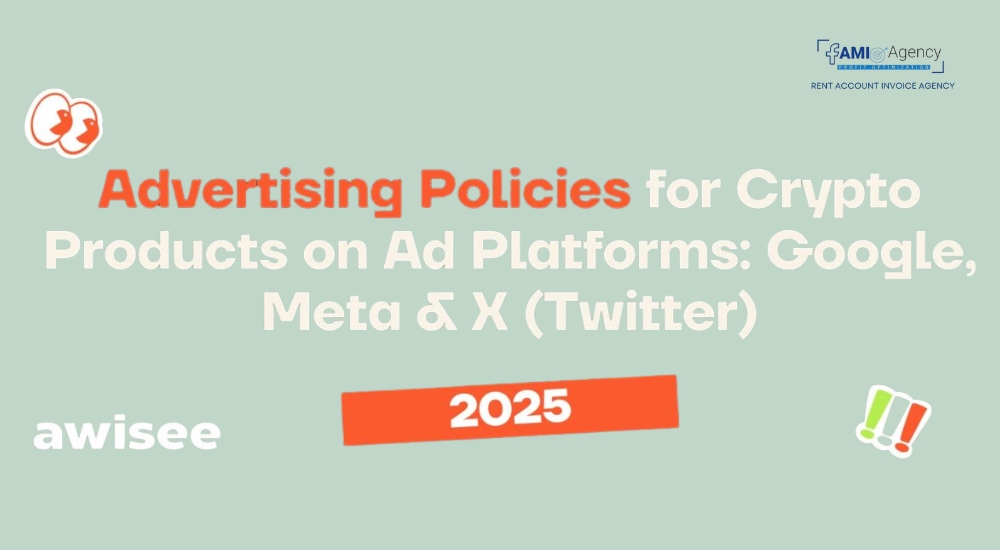Advertising cryptocurrency and blockchain services is tricky. Platforms like Google Ads, Meta (Facebook and Instagram), and X (formerly Twitter) have lifted blanket bans, but they still impose strict rules. If you want to run compliant ads—and avoid getting your account suspended—you need to understand how each platform now views crypto, what approvals are necessary, and how to stay clean under regulatory scrutiny.
Google Ads
Google has taken a region-specific and certification-first approach. If you want to advertise crypto exchanges, wallets, or similar products, you must go through the Google Financial Products Certification process and hold all relevant local licenses.
For example:
- In the EU, as of April 23, 2025, only Crypto Asset Service Providers (CASP) who hold a MiCA license (or equivalent national license) are permitted to advertise in its 27 member countries.
- In the UK, starting January 15, 2025, crypto exchanges and wallets must be FCA-registered to advertis.
- Similar requirements apply in Australia, Canada, Japan, Thailand, Switzerland, and many other jurisdictions.
Google distinguishes between different crypto products:
- Allowed with certification: crypto exchanges, software wallets, hardware wallets, trust funds.
- Prohibited: ICOs, DeFi protocols, token presales, trading signals, or any financial advice.
In short, if your crypto business is fully licensed, locally certified, and approved by Google, you’re in good shape. Otherwise, your ads simply won’t serve.

Meta (Facebook & Instagram)
Meta no longer bans the promotion of crypto outright, but random accounts and non-compliant ads are frequently blocked. To run crypto-related campaigns, you must:
- Obtain pre-approval from Meta’s Business Support team
- Demonstrate that your service is either a legitimate trading platform, wallet, or blockchain utility
- Include risk disclosures, fee structures, and avoid guarantee-based messaging (“double your money,” “guaranteed returns”)
Meta monitors policies continuously; failing to include proper disclaimers or using aggressive claims can lead to swift enforcement, including campaigns paused and accounts disabled.
X (Twitter)
X treats crypto as part of its Financial Products & Services policy. If you want to advertise crypto-related services:
- You need pre-approval and certification per country
- Ads must carry a risk disclaimer, such as “Crypto products and NFTs are unregulated and carry high risk
- Advertisers must hold local regulatory licenses (e.g., FCA in the UK, FSA in Japan, SEC-type bodies elsewhere)
Without these steps, your ads are likely to be disapproved or your ad account flagged. There have even been abuses: scammers using spoofed domains to place fake crypto presale ads—showing just how careful X is about enforcement .
Summary Table
| Platform | Allowed With Certification | Requirements | Prohibited |
| Exchanges, wallets, hardware and software wallets, crypto trust funds | Google certification + local licensing (MiCA, FCA, FINTRAC, etc.) | ICOs, DeFi protocols, trading advice, token presales | |
| Meta | Trading platforms, wallets, NFT marketplaces (compliant) | Pre-approval, risk & fee disclosure, no guarantee-based claims | Aggressive financial claims, token presales |
| X | Crypto services, wallets, DeFi tools (pre-approved regions) | Country-specific licenses + risk disclaimers | ICOs, unregulated exchanges, misleading offers |
Final Takeaways
Advertising crypto is possible but only if your business is clean, legal, and transparent:
- Certify early and gather all required licenses before launching ads
- Speak in educational terms, not investment promises
- Include risk disclosures and clear fee info
- Choose a platform that matches your compliance readiness—Google for licensed firms, Meta for commentary-driven campaigns, X if you can meet regional licensing
- Monitor your ads continuously—policies can change rapidly, and enforcement may happen without warning
If your organization runs crypto ads, make sure compliance is not an afterthought. It is the foundation for long‑term success.



Open this in UX Builder to add and edit content